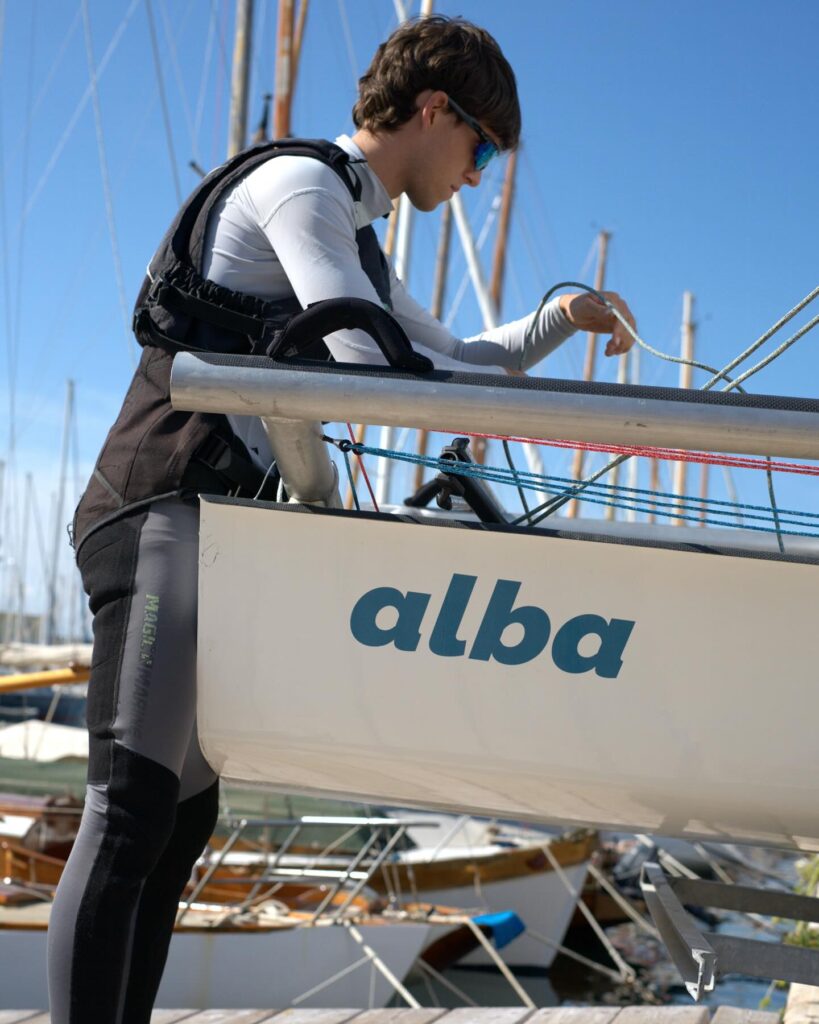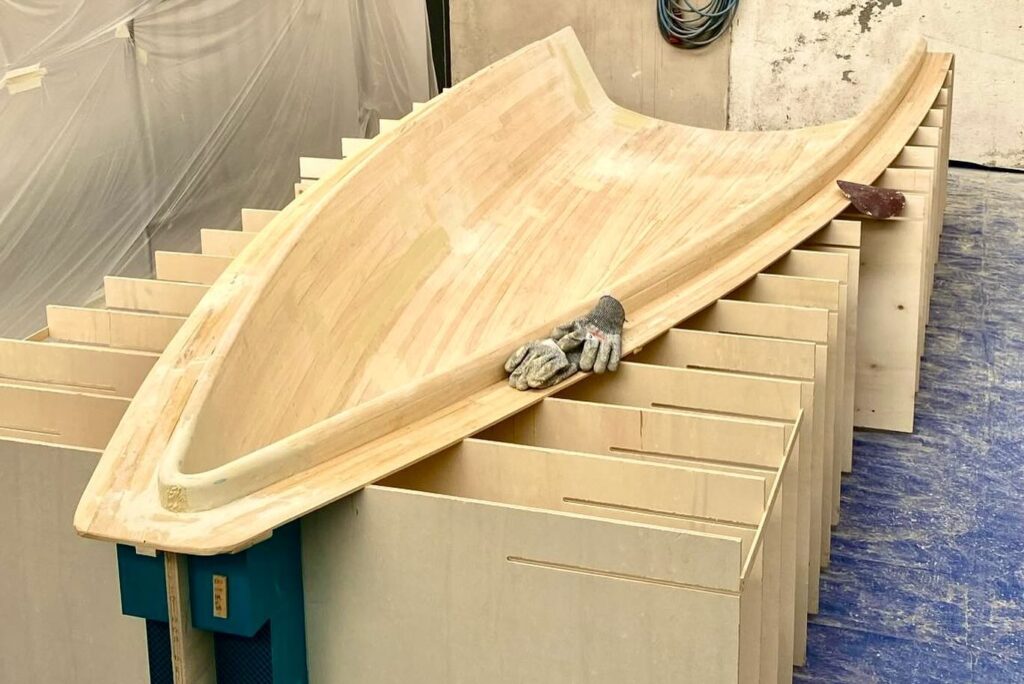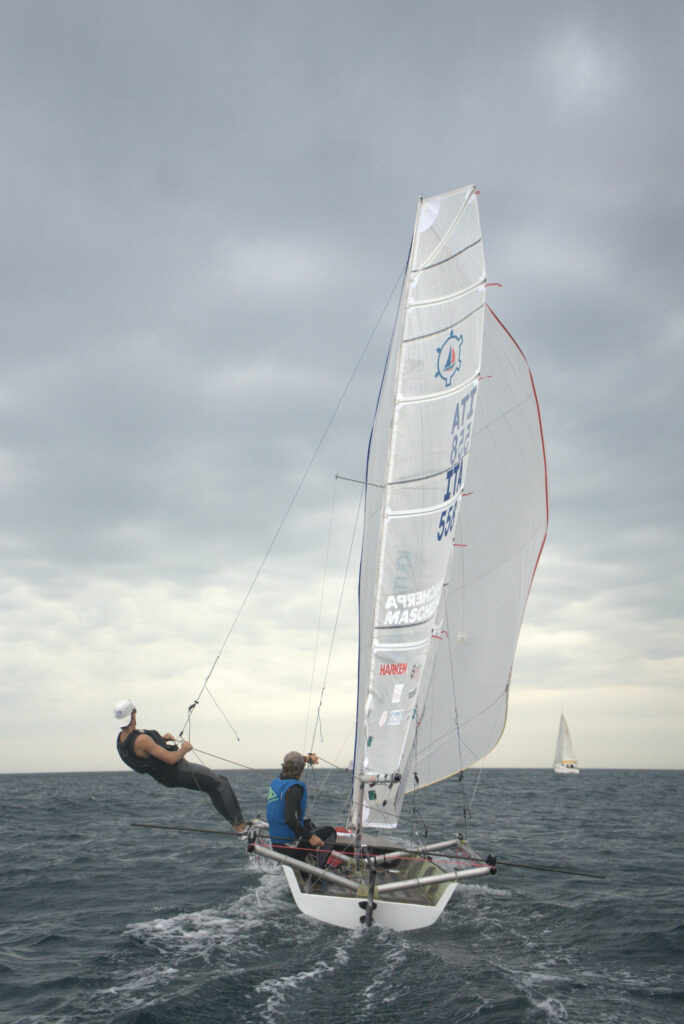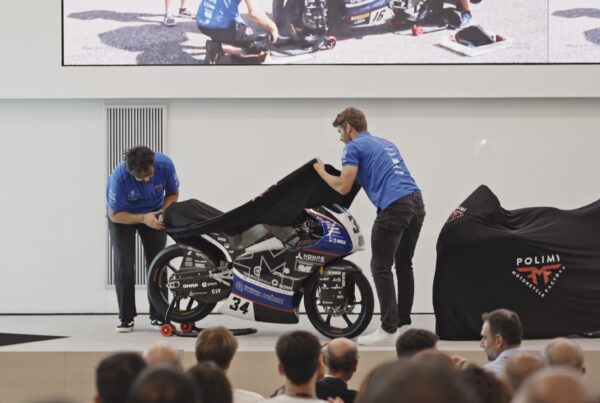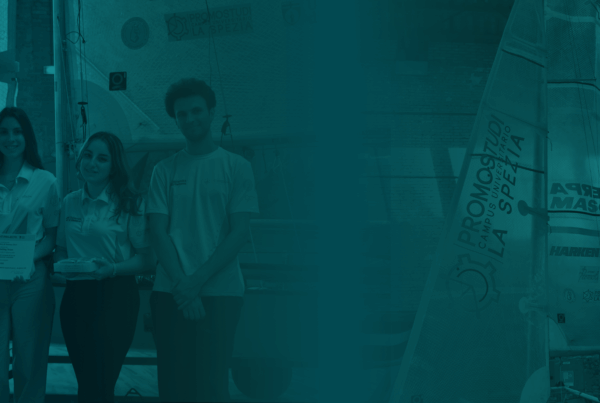In the world of competitive boating, innovation in materials is key to improving performance and reducing environmental impact. This is the context for the collaboration between Mascherpa and the Revel Sailing Team, an interdisciplinary team from the Polo Nautico of the University of Genoa – La Spezia branch, which designed and built a racing skiff capable of combining high performance and composite materials.
The project stems from participation in the 1001VELAcup, an international university regatta that requires at least 70 percent of the materials used to be natural, recycled or recyclable, and consequently structured by having a composite material at its base. To meet this requirement, the team had to explore new solutions in the field of composite materials, selecting flax and glass fiber reinforcements, a recycled PET structural core, and bio-based resins. Mascherpa provided the necessary technical support and materials, ensuring a balance between strength, light weight, and reduced environmental impact.
The biggest challenge was balancing structural efficiency and compliance with environmental regulations while optimizing mechanical properties to ensure resistance to the dynamic stresses typical of shipping. The team worked on material selection and the vacuum infusion process, a technique that improves resin distribution and reduces waste and unnecessary weight. Through this combination of advanced engineering and materials research, the Revel Sailing Team’s skiff is a concrete example of how sustainable boating can evolve without compromising performance.
The technical solutions: composite materials and advanced processes
The use of advanced composite materials was a key element in the design and construction of the Revel Sailing Team‘s skiff. The goal was to ensure a balance between lightness, stiffness, and sustainability while meeting the constraints of the 1001VELAcup regulations. Thanks to Mascherpa‘s technical supply, the team was able to select state-of-the-art materials for each component of the boat, optimizing the infusion process and improving race performance.
Structural reinforcements made of flax, glass and carbon fiber
To ensure maximum structural strength with low weight, the skiff was made with a mix of advanced reinforcement fabrics. Linen fiber, selected for its natural and low-impact properties, provided a sustainable base in reinforcement. However, to optimize mechanical strength and stiffness, it was supplemented with fiberglass and carbon fiber, materials that offer an ideal combination of strength and flexibility
Fabric weights and biaxial configurations were carefully chosen to maximize performance under different hull stresses. The Saertex X-F-420g/m² linen fiber fabric improved the sustainability of the design, while the X-E-444g/m² fiberglass fabric provided greater strength under stress conditions. Finally, X-C-406g/m² carbon fiber, used for the appendages alone, helped reduce the overall weight, improving structural rigidity without compromising durability.
Recycled PET core material: 3DCore GR HX 75
One of the most innovative elements of the boat was the use of 3DCore GR HX 75, a core material made of recycled PET with a hexagonal structure. This material made it possible to improve structural rigidity without a significant increase in weight, taking advantage of the principle of increasing the distance between skins to achieve optimal strength.
Due to its special conformation, the 3DCore not only reduced the consumption of structural material, but also facilitated the resin infusion process, improving adhesion between layers and preventing delamination problems and perfectly following the curvature of the hull. Moreover, being derived from PET bottle recycling, it contributed significantly to the sustainability of the project.
Resins and structural adhesives: Huntsman LY 5052 MBC resin and Araldite adhesives
For lamination and consolidation of composite materials, the Revel Sailing Team used Huntsman LY 5052 MBC resin, an advanced epoxy resin with REDCert2 certification, which provides a reduced carbon footprint through the use of components from biomass.
The properties of this resin offerexcellent fiber impregnation and low viscosity, facilitating the vacuum infusion process and ensuring greater homogeneity in material distribution. In addition, the resin has high mechanical and thermal properties, which are essential to ensure the durability of the structure.
To attach and assemble the components, the team used Araldite structural adhesives, including Araldite 2015-1 e Araldite 2051, chosen for their mechanical strength and adhesion ability on composite surfaces.
Infusion consumables: process optimization with Diatex
A critical aspect of skiff construction was the vacuum infusion process, which was essential to reduce defects in lamination and ensure uniform resin distribution. For this reason, Mascherpa supplied a range of Diatex consumables, including vacuum films, infusion tubes, peel ply, and sealants, which improved the efficiency and quality of the process.
The use of advanced drainage systems, such as the DIADRAIN 100MM FLAT RESIN CHANNEL, facilitated the control of resin flow, while the use of peel ply PA80 and PO120 vacuum bags enabled better adhesion between layers and optimized processing time.
Through the integration of these advanced materials and processes, the Revel Sailing Team has succeeded in creating an innovative, sustainable, high-performance skiff, demonstrating how research into eco-sustainable composite materials can be the future of competitive boating.
Sustainability and innovation in composite materials
The use of natural and recycled composite materials was a strength of the project, demonstrating how environmental impact can be reduced without compromising performance. Flax fiber, in addition to being a renewable resource, required a low-energy production process, while 3DCore’s recycled PET breathed new life into plastic materials, contributing to the reduction of industrial waste.
The combination of bio-based resins and recycled materials led to a significant reduction in carbon footprint, in line with new sustainability guidelines for the marine industry. In addition, the use of optimized adhesives and processes minimized material waste, making the production cycle more efficient.
The adoption of bio-based solutions represents a concrete step toward more sustainable boating, in which composite materials can be increasingly oriented toward thecircular economy. The experience of the Revel Sailing Team confirms how research into innovative materials and advanced processes can represent the future of shipbuilding, combining structural efficiency and environmental friendliness.
Performance and results of the Revel Sailing Team project
The use of advanced composite materials enabled the Revel Sailing Team to create a high-performance skiff with an excellent ratio of structural strength to weight. In competition, the boat demonstrated good responsiveness and maneuverability, with optimized stiffness due to the combination of flax fiber, fiberglass, along with carbon fiber, which reduced deformation under load. The use of 3DCore made of recycled PET improved stress distribution, ensuring greater stability without significantly increasing weight.
Compared to boats built with conventional materials, the Revel Sailing Team’s prototype showed lower weight for the same strength, enabling better hydrodynamic trim and more immediate response during acceleration and turning. However, the integration of sustainable materials required careful study of mechanical properties to ensure comparable performance to conventional solutions.
High performance with low environmental impact with Mascherpa products
The collaboration between Mascherpa and the Revel Sailing Team demonstrated how theintegration of innovative composite materials can be a practical solution for the future of sustainable boating. The project highlighted the potential of natural fibers and recycled materials in the racing sector, demonstrating that reduced environmental impact can coexist with high structural performance.
This experience represents an important step in the research and development of environmentally friendly solutions, paving the way for new applications in the marine industry. The adoption of bio-based composites, recycled materials, and optimized production processes may not only improve sustainability, but also contribute to the creation of lighter, stronger, and better performing boats. The success of the project with the Revel Sailing Team reinforces the idea that future boating will necessarily have to come throughinnovation in materials and the adoption of more sustainable technologies.
This with the Revel Sailing Team is just one of the partnerships with which Mascherpa makes its experience and products available to young entities, with which it shares values and projects. Find out about other collaborations on our website by checking out the Next project.



